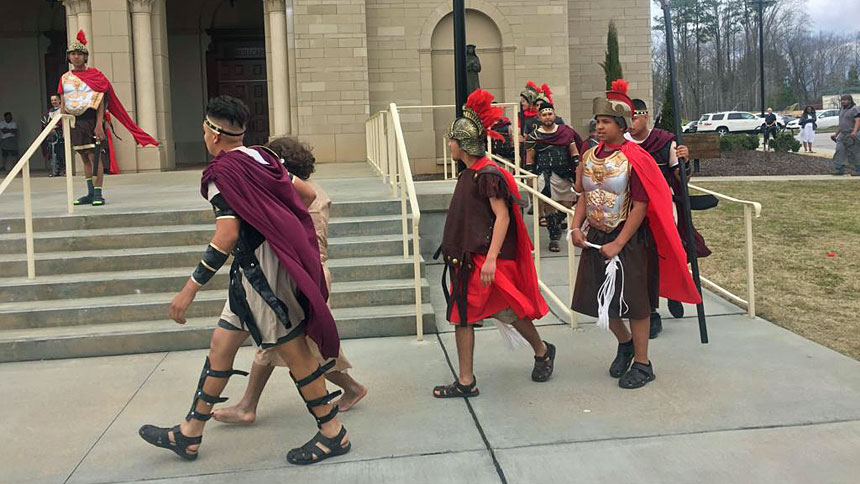
For Hispanic Catholics, Good Friday is a physical experience as much as a spiritual one during Holy Friday events that connect them with their cultural roots. Walking beside Jesus carrying his cross, comforting his crying mother, accompanying the other women who walk and cry as he says his final words; these scenes will be a part of the traditions that many Hispanics will be representing this year during Holy Week.
Many parishes in the Diocese of Raleigh with Hispanic ministries appeal to traditions from Central and South America and Mexico, where Jesus' death is dramatically recreated on city streets and church sanctuaries. These processions are a way to represent the life of Christ to other people; a way in which you can see and honor, in a particularly vivid way, Jesus' love for us. There is an air of solemnity around these events, which help transfer the faith through generations as young children watch the passion play from their fathers’ shoulders.
“These traditions are important because it is a way to keep our Latino community alive and united. They are the roots that must be cultivated so as not to lose the identity of an entire people”, said Bishop Luis Rafael Zarama.
Identify with suffering
This representation of Christ’s suffering and as a victim of the Roman officials who stand nearby dressed in customary red, often takes on special meaning for Hispanic Catholics who have immigrated to the United States escaping dictatorships or violent governments.
Bisphop Zarama encouraged the Hispanic community and all in the diocese to open their hearts and not be passive spectators but active participants in these ceremonies that are celebrated during Holy Week. He said that Latinos often like to identify themselves with Holy Friday and very little with Easter Sunday.
“We cannot remain in death, we must with the help of Jesus rise with him,” said the Bishop. “And discover that there is always hope, although everything seems lost.”
In the Diocese of Raleigh, Hispanics make up half the Catholic population. Hundreds will attend “El Via Crucis,” the Way of the Cross, and listen to reflections on “Siete Ultimas Palabras de Jesus,” the Last Seven Words of Jesus. In many parishes, the Living Stations of the Cross will start between noon and 4 o'clock on Good Friday, followed by Mass. Many of the ceremonies will be bilingual.
Learn more about bilingual celebrations at the Holy Name of Jesus Cathedral.


